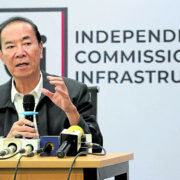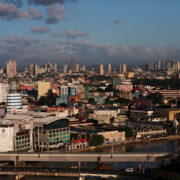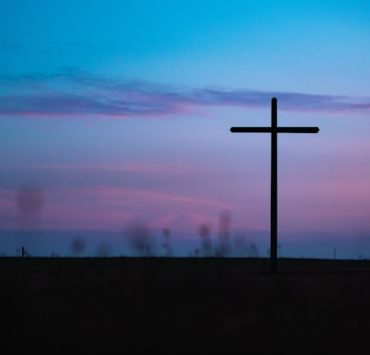Rare photographs of Philippine churches on exhibit in Cavite

Piquing interest in the recently opened exhibition of Philippine churches at the Geronimo Berenguer de los Reyes Museum (GBR Museum) in General Trias, Cavite is a late 19th-century image of a Central Luzon church reminiscent of the early mission churches in the country built mostly, if not entirely, from simple construction materials.
That church is made from wood planks, with the lower part, including the focal point, which is the nicely decorated main portal, made of stone.
This construction set-up might remind one of churches built by the Jesuits in northern Mindanao, notably the Jasaan Church, a national cultural treasure.
The religious edifice in reference is the Santo Niño Church in Bamban, Tarlac, which was most likely built in the 1890s by the Augustinian Recollects who made Bamban their mission since at least 1712.
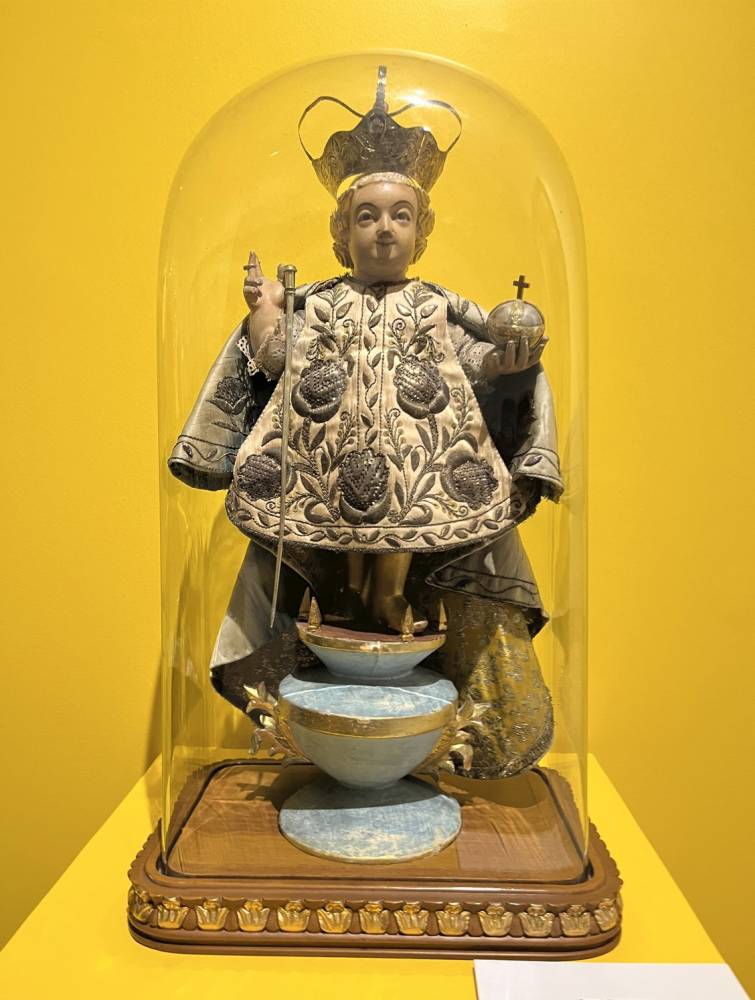
In 1936, this church was reconstructed in concrete, inspired by the Neo-Gothic style, with twin towers flanking the facade.
The pre-1936 church also featured a quadrilateral belfry made from wooden posts and a big, possibly L-shaped convent following the indigenous architectural design.
Interestingly, the stone portal of the old church was incorporated into the new one, a feature that seems to exist to this day.
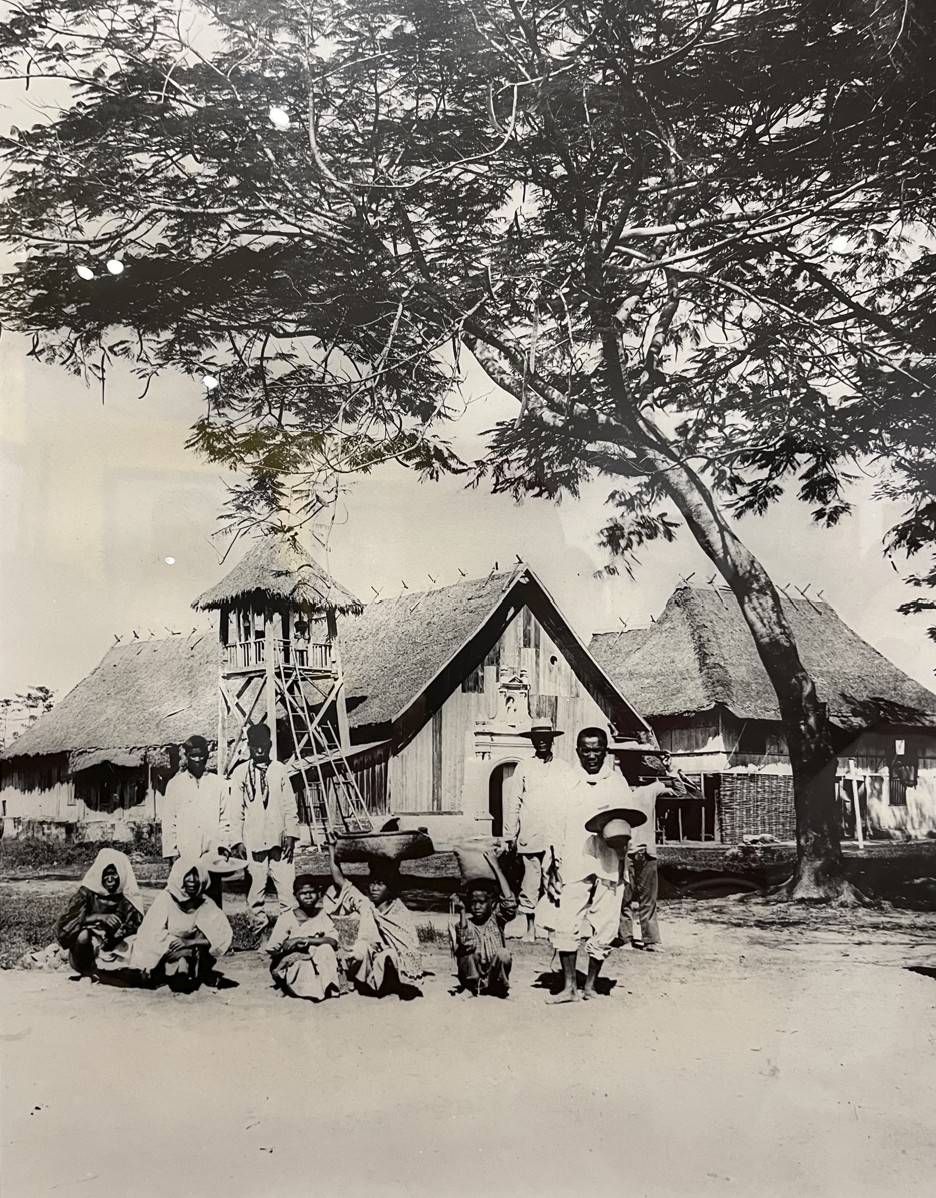
‘Building Faith’
The image of this church is just one of many currently on exhibit at the GBR Museum. They’re part of the collection of Geronimo Berenguer de los Reyes (1936-2020), a businessman-philanthropist who was a known collector of exceptional archival images, books, and other collectibles related to the Philippines and aviation.
Titled “Building Faith: A Testament of Filipino Piety and Artistry,” the exhibit of 19th to early 20th century church images opened on April 16 and will run until Dec. 23. Curator is Billy Malacura, with exhibition design by Jonathan Gamalinda.
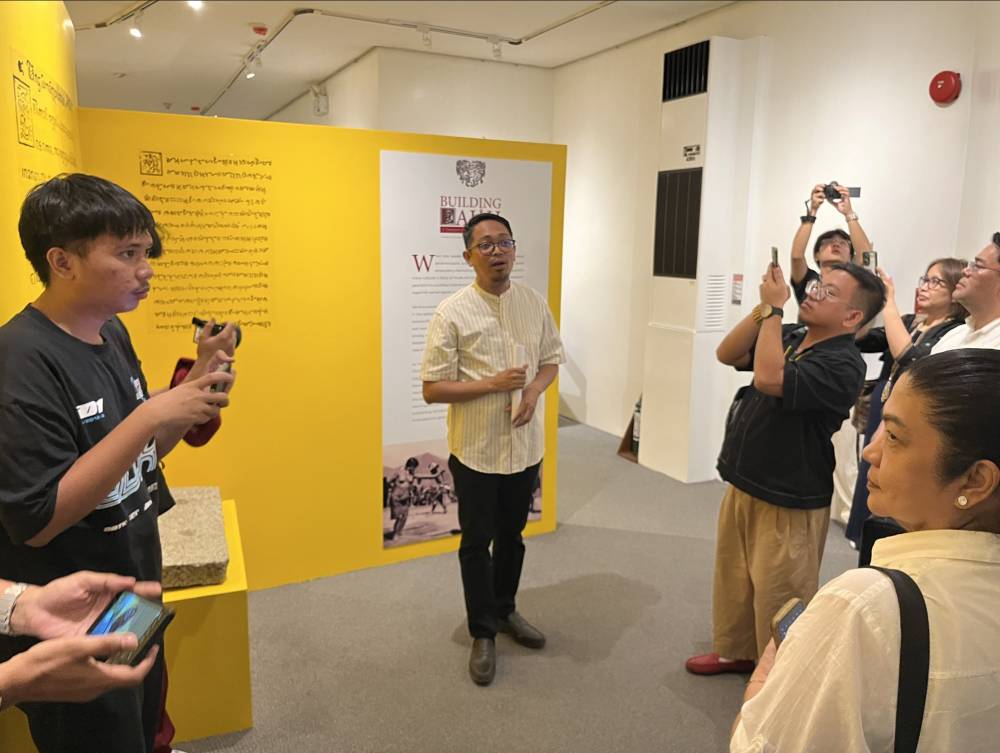
Part of the exhibit are archival images of the churches of Luzon such as Lingayen in Pangasinan and Santa Maria in Bulacan. Also featured are churches of old Manila like the second San Ignacio Church, which has impressive interiors, and the Dominican Santo Domingo Church, both in Intramuros, and those found in Manila’s environs and nearby towns like Tondo, Binondo, and Parañaque.
Visayas churches are featured as well, including ones in Molo and Jaro in Iloilo, Calbayog in Samar, which has a beautiful retablo, and Carcar in Cebu.
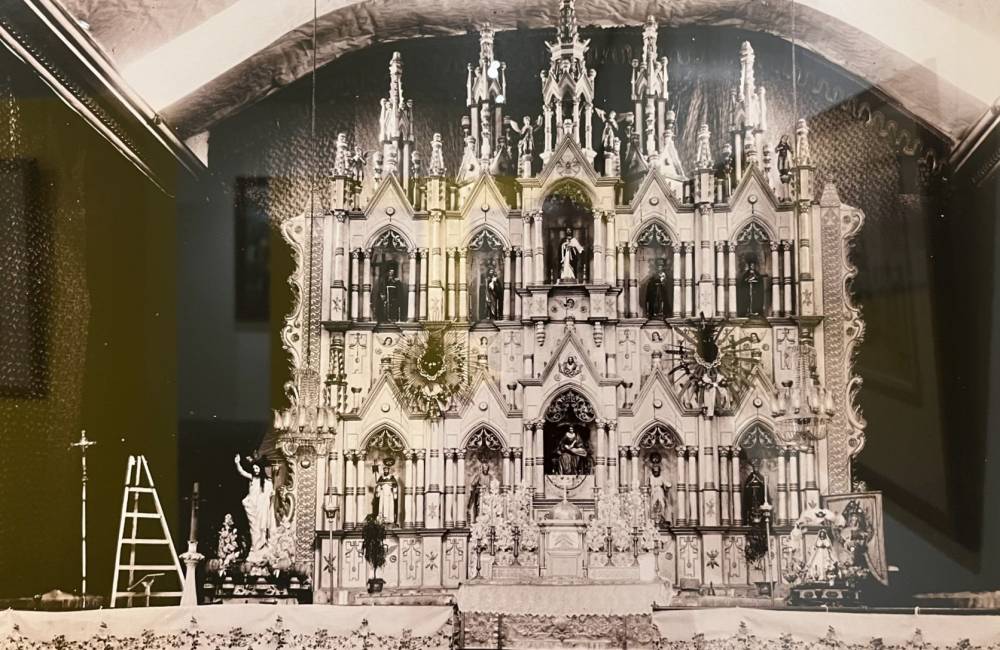
The exhibit also includes the imposing Spanish colonial church of Davao in Mindanao, with its twin belfries and big convent which have since been replaced by a modernist structure.
Presented too are the lost churches of Cavite City and the old hilltop church of Antipolo, with a farmer plowing a field in the background. These were all lost during World War II, except for the belfry of the Santa Monica Church in Cavite.
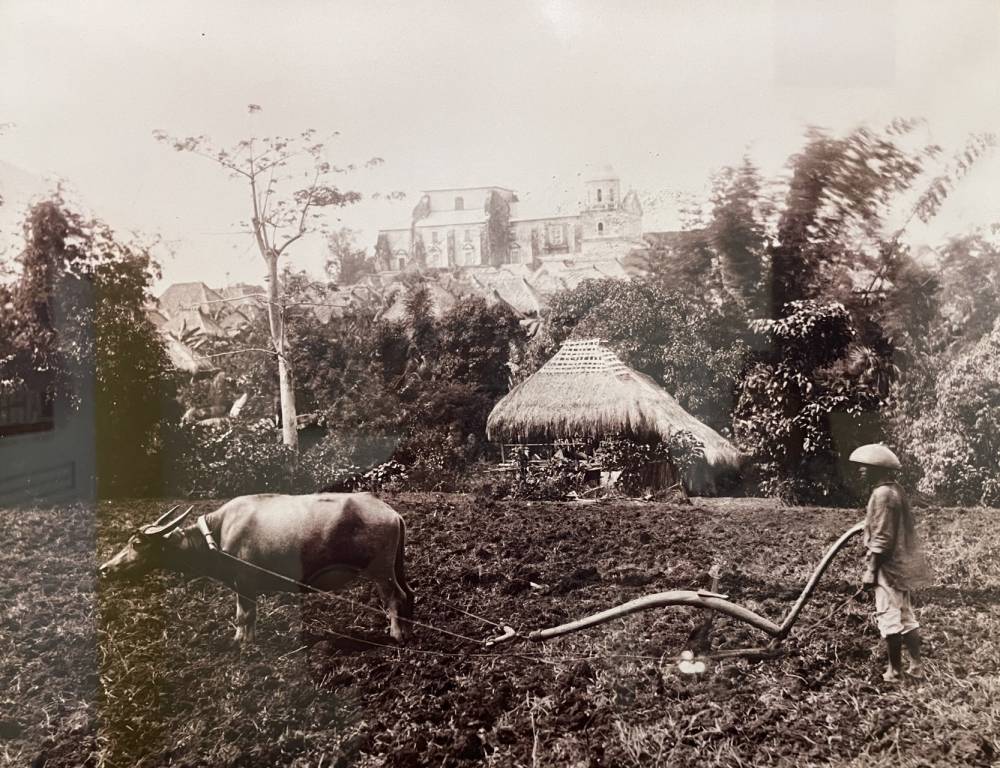
Aside from Catholic churches, the Episcopal Cathedral of Saint Mary and Saint John, which used to stand on Isaac Peral Street (now United Nations Avenue) in Manila, and the old Knox United Methodist Church in Manila’s Santa Cruz district, are also part of the exhibition.
Also displayed are samples of construction materials used in the building of these churches such as piedra china, coral stone, and different types of wood, an image of Cavite’s patroness Nuestra Señora de la Soledad de Porta Vaga, an 18th to 19th century image of the Santo Niño de Cebu, and a scale model of the Our Lady of Guadalupe Church. The church was built in 2007 by De los Reyes across the Gateway Business Park in General Trias. He donated it that same year to the local diocese.
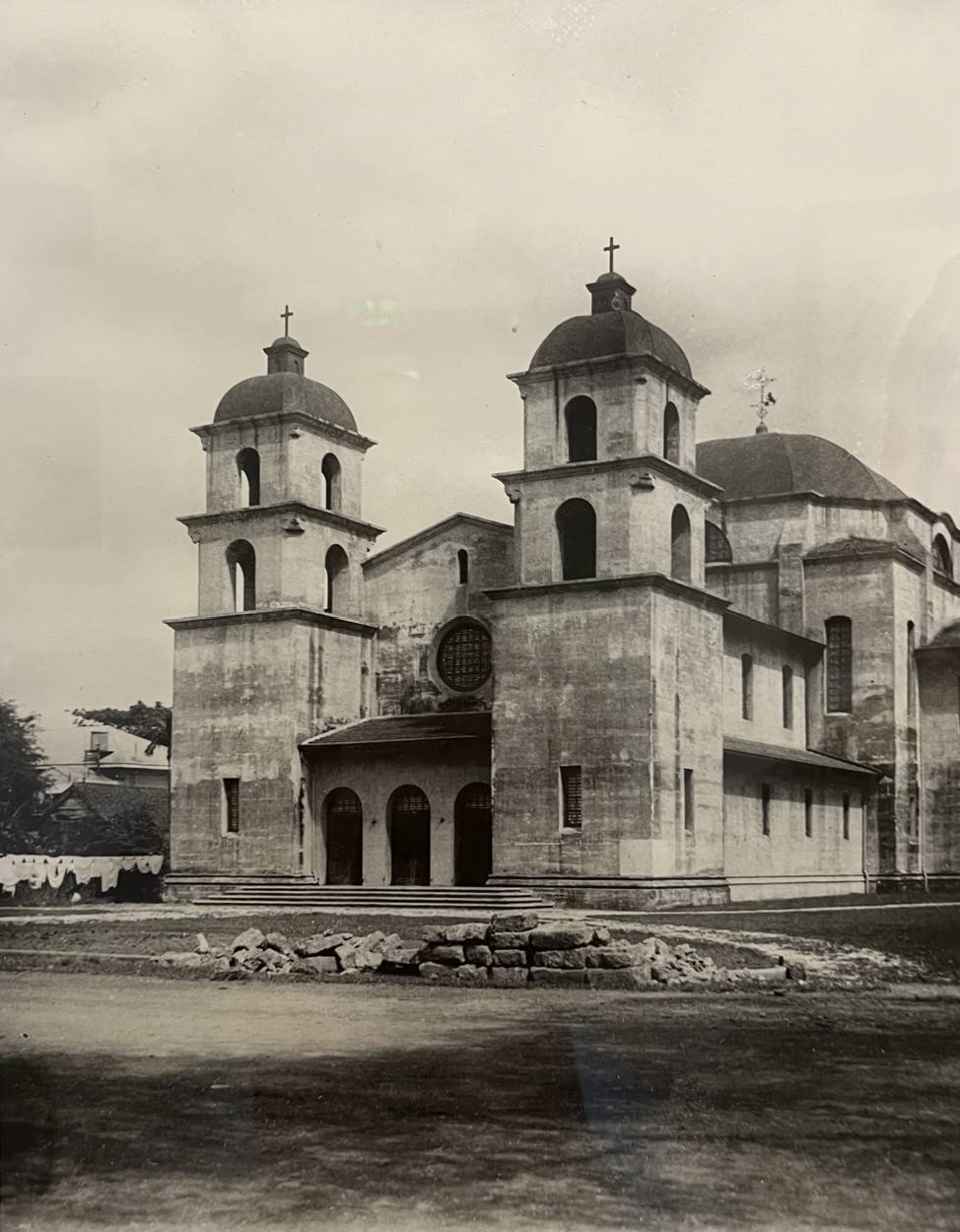
Opening
John Silva, director of the Ortigas Foundation Library and the first executive director of the GBR Museum, delivered a lecture on the significant collection of the museum. The opening of the exhibit was graced by De los Reyes’ kin, including historian and former Tarlac governor Margarita “Tingting” de los Reyes Cojuangco.
Heritage biscuits and other treats from Cavite were served in a makeshift tuklong or temporary shrine-inspired structure during the opening. There were gorgoria racion and sopas biscuits from Tanza, Naic’s lengua de gato, camachile biscuits of Indang, Jacobina biscuits of Mendez-Nuñez, and emapanaditas of Bacoor.
In his speech during the opening, Gateway Property Holdings Inc. president Caesar Taccad described the exhibit as “a celebration of faith, memory, and artistry.”
He also stressed the importance of the preservation of the cultural and spiritual heritage of Filipinos as it “stands as a tribute to the depth of Philippine devotion and the enduring artistry that preserved it through the centuries.”
Curator Malacura said the exhibit ushers in a series of activities in celebration of the museum’s 30th year, which include a lecture on churches on May 23 by National Historical Commission of the Philippines chair Regalado Trota Jose.
The images being exhibited, the curator said, “speak volumes of layered narratives and signification.”
“These photographs also remind us of both the material and intangible facets of our religiosity,” Malacura said. “While Christianity has taken physical form in these monumental structures, it also has built faith in the realms of our minds, in the fields of visual arts, literature, architecture, engineering, music, education, medicine, and so much more.”




